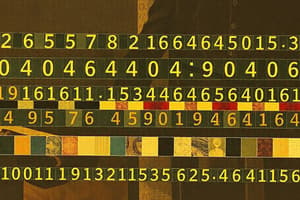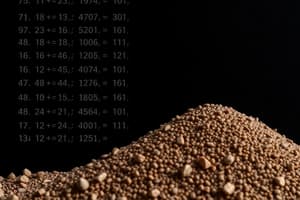Podcast
Questions and Answers
Heap sort is a comparison-based sorting technique based on Binary Search Tree data structure.
Heap sort is a comparison-based sorting technique based on Binary Search Tree data structure.
False (B)
In Heap Sort, the minimum element is placed at the end of the array during each iteration.
In Heap Sort, the minimum element is placed at the end of the array during each iteration.
False (B)
The time complexity of Heap Sort is O(n^2) in all cases.
The time complexity of Heap Sort is O(n^2) in all cases.
False (B)
Heap Sort maintains good performance even with a large number of elements due to the log n factor from the height of the binary heap.
Heap Sort maintains good performance even with a large number of elements due to the log n factor from the height of the binary heap.
To solve the problem using Heap Sort, first convert the array into a queue data structure.
To solve the problem using Heap Sort, first convert the array into a queue data structure.
Bubble Sort is the most efficient sorting algorithm for large data sets.
Bubble Sort is the most efficient sorting algorithm for large data sets.
Bubble Sort is a stable sorting algorithm.
Bubble Sort is a stable sorting algorithm.
Bubble Sort requires additional memory space to execute.
Bubble Sort requires additional memory space to execute.
Bubble Sort compares adjacent elements and places the higher one at the left side.
Bubble Sort compares adjacent elements and places the higher one at the left side.
The worst-case time complexity of Bubble Sort is O(N^2).
The worst-case time complexity of Bubble Sort is O(N^2).
Flashcards are hidden until you start studying




